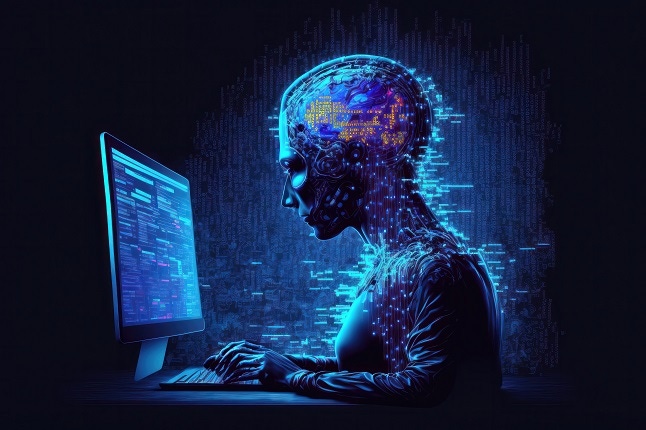New developments in generative AI are changing enterprise productivity as we know it. What will come next?

Big tech is moving fast when it comes to adding generative AI capabilities to mainstream enterprise applications. Last week, Salesforce announced it would add ChatGPT to its Einstein AI tool for CRM and introduced ChatGPT for Slack. On March 6 Microsoft revealed it added generative AI capabilities to the Power Platform low-code development tool and introduced next-generation AI by launching Microsoft Dynamics 365 Copilot.
And on March 16 Microsoft announced Office 365 Copilot, which adds OpenAI’s GPT-4 language technology to its productivity applications, including Word, Excel, PowerPoint, and Teams. It incorporates large language models with data in Microsoft Graph, which includes calendar info, emails, chats, documents, and meetings. All the Office 365 apps will feature the AI-powered Business Chat tool.
“Copilot combines the power of large language models with your data and apps to turn your words into the most powerful productivity tool on the planet,” Jared Spataro, Microsoft corporate vice president for modern work and business applications, said in a press release.
Through natural language, AI will “radically transform how computers help us think, plan and act,” Microsoft Chairman and CEO Satya Nadella said in the March 16 “The Future of Work: Reinventing Productivity with AI” event. He called the launch of Office 365 Copilot the “start of a new era of computing.”
Nadella said previous AI capabilities have been used on autopilot. “With this next generation of AI, we’re moving from autopilot to Copilot,” Nadella said.
Not to be outdone, on March 14 Google announced it will add generative AI capabilities to its Workspace platform, including Search, Maps, Gmail, and Docs. It will let a select sample of testers try the AI writing features in Docs and Gmail. Then Google will launch the tools more broadly to consumers and businesses.
“We know from our deep experience in AI and productivity that building features with AI requires great care, thoughtful experimentation, and many iterations driven by user feedback,” Johanna Voolich Wright, vice president of product for Google Workspace,” wrote in a blog post. “We do all this while building safeguards against abuse, protecting the privacy of user data and respecting customer controls for data governance.”
Salesforce Advances Its AI Capabilities in CRM, Slack, Tableau
On March 7 Salesforce announced Einstein GPT, which brings generative AI to its Customer 360 CRM tool. Einstein GPT incorporates AI models built for CRM. It integrates OpenAI’s technology to help users in sales, service, marketing, commerce, and IT with AI-generated content. Einstein GPT will also draw data from partners and real-time data from the Salesforce Sales Cloud. Users can rely on OpenAI’s AI models in Einstein GPT or follow the natural-language prompts from within Salesforce CRM to generate custom content. Einstein GPT also generates emails geared toward a user’s job. For example, a customer service agent could use Einstein GPT to create knowledge articles from past case notes and create auto-generalized personalized interactions. Meanwhile, sales reps can use the tool to auto-generate emails, schedule meetings, and prepare the next interaction.
"The world is experiencing one of the most profound technological shifts with the rise of real-time technologies and generative AI,” Salesforce CEO Marc Benioff said in a statement. “This comes at a pivotal moment as every company is focused on connecting with their customers in more intelligent, automated and personalized ways.”
The Einstein AI technology generates more than 200 billion predictions per day throughout the Customer 360 CRM app. Salesforce is offering Einstein GPT as a closed pilot to customers through October.
Announced on March 7, the ChatGPT app for Slack is now in beta and will be generally available later this year. Salesforce said ChatGPT will help users find answers on projects faster in Slack and draft messages in seconds.
As with Microsoft Teams in Office 365 Copilot, Slack incorporates Open AI’s large language models to power automated conversations.
By introducing ChatGPT in Slack, Salesforce is making communication simpler and easing workflows with automation, explains Bradley Shimmin, chief analyst, AI and data analytics, at Omdia. “From the Slack point of view, this is a very interesting time, as the use of generative AI within Slack can serve two purposes: First, it can serve as a more capable, adaptive and natural means of communication. Second, it opens up many doors in terms of facilitating the automation of workflows and the abstraction of back-end API calls,” he says.
Meanwhile, on March 15, Salesforce announced that its data visualization software unit Tableau is launching new AI features that offer personalization and automation to enable data to be more accessible across organizations. Tableau will let companies use natural language while adding business context to dashboards.
With Salesforce having already incorporated AI capabilities like natural language processing (NLP) in Tableau, Salesforce is well-positioned to use generative AI, according to Shimmin.
“Already the company has been using NLP to great effect with products like Tableau to generate explanations of complex data visualizations, for example,” Shimmin says. “The ability of generative AI tools to extend that kind of capability to a broad set of use cases will drive these existing projects forward and create many new opportunities for the company.”
Generative AI Reaches the Mainstream
With generative AI now powering conversation summaries, research tools and writing assistance in Slack, the AI technology is clearly reaching commonly used enterprise applications. In fact, Salesforce’s Generative AI in IT Survey revealed that 67% of the 500 senior IT leaders surveyed are prioritizing generative AI in their business over the next 18 months.
As generative AI apps become mainstream, IT leaders will need to grapple with having all of the tools work seamlessly in their workflows and avoid pitfalls, according to Bob O'Donnell, president and chief analyst at Technalysis Research.
“The potential impact of these tools is enormous, but many questions remain about how to best take advantage of them while avoiding problematic scenarios,” O’Donnell says. “The biggest challenges for most CIOs will be figuring out how the offerings from different vendors can work alongside each other.”
What’s Next in Generative AI?
In the near future, expect to see other companies integrate generative AI tools into business applications, but O’Donnell says how they do so won’t be the same. O’Donnell notes that some general-purpose generative AI tools might generate content across tools, and others will have their own generative AI engine.
Just as Microsoft is integrating generative AI tools into its productivity applications and Google has added generative AI features in Search, Google Docs, and Gmail, O’Donnell would like to see some more clarity on how tools will work together.
“I think that’s going to lead to confusion over what the best choice is and how tools might be mixed or matched,” O’Donnell says.
As generative AI becomes more common in enterprise applications, ChatGPT could be a good fit for healthcare, according to Neil Sahota, lead artificial intelligence adviser to the United Nations and cofounder of the AI for Good Global Summit.
“Most of the medium-size to large companies are actively exploring how to best use generative AI, and many startup companies are actively incorporating ChatGPT in hopes of gaining a competitive advantage,” Sahota says. “In the near future, I suspect we'll see more use cases in healthcare to collect and aggregate information for health practitioners.”
Shimmin also sees generative AI solutions being developed for specific verticals. He expects developments to come from vendors like Intel, Huggingface, and Nvidia. Huggingface and other platform providers will work on making models that are more accessible, affordable, and governable, according to Shimmin.
“These and many more platform providers will seek to help enterprise AI practitioners build generative AI solutions as well as access huge models at a modest cost and with appropriate controls/assurances,” Shimmin says.
What to Read Next:
Should There Be Enforceable Ethics Regulations on Generative AI?
Malicious Actors and ChatGPT: IT Security on the Lookout
What Just Broke?: Digital Ethics in the Time of Generative AI
About the Author(s)
You May Also Like







